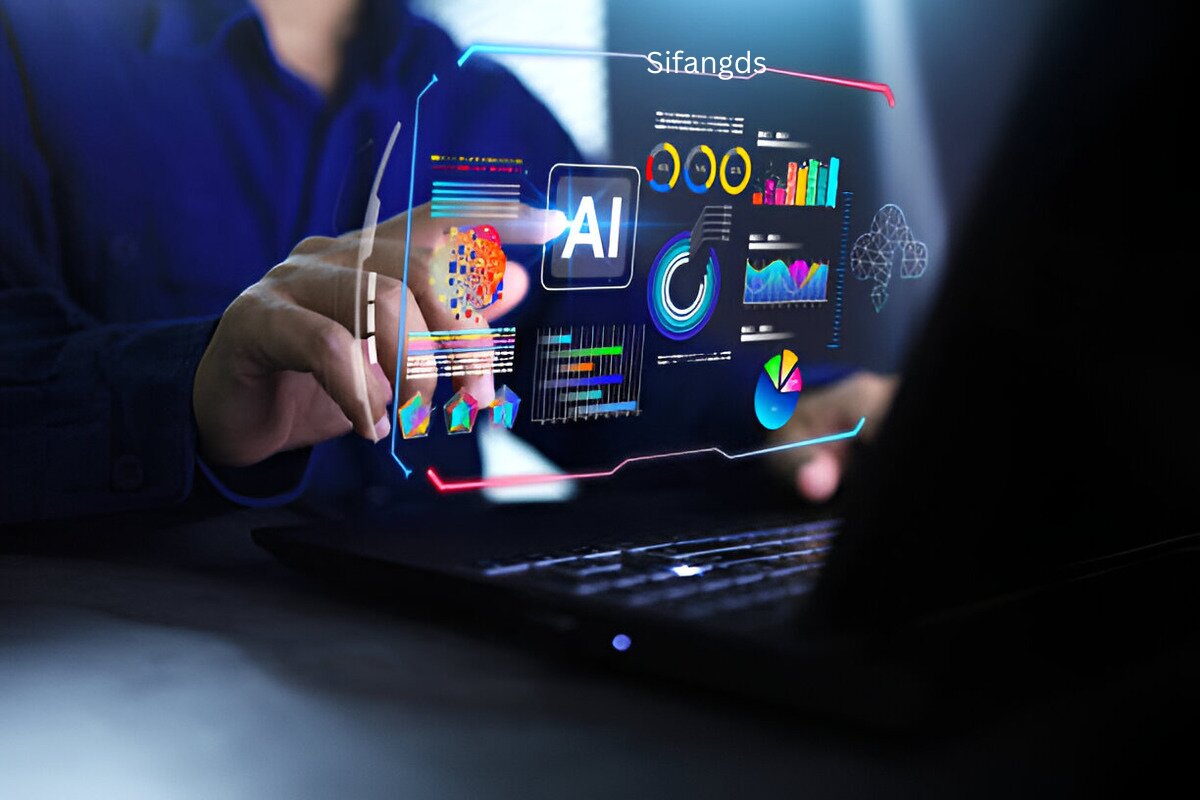In a rapidly evolving technological landscape, understanding the intricacies of new innovations is crucial. One such innovation making waves in various industries is Sifangds. But what exactly does this term encompass? From its origins to its cutting-edge applications, Sifangds has become a pivotal topic among tech enthusiasts and professionals alike.
As we dive into this comprehensive guide, you’ll discover how Sifangds works and why it matters today more than ever. Whether you’re an industry expert or just curious about emerging technologies, this exploration promises to shed light on the significance of Sifangds and its potential impact on our world. Buckle up—let’s embark on this enlightening journey together!
Read More: Amikaf16: The Future of Digital Innovation
What is Sifangds?
Sifangds is a groundbreaking concept that integrates various technological advancements to enhance efficiency and connectivity. At its core, it embodies the principles of data-driven decision-making and intelligent automation.
This innovative framework utilizes sophisticated algorithms to analyze vast amounts of data in real time. By doing so, Sifangds optimizes processes across multiple sectors, from manufacturing to healthcare.
One striking feature of Sifangds is its adaptability. It can seamlessly blend with existing systems while providing scalable solutions tailored to specific needs. This flexibility makes it particularly appealing for businesses looking to innovate without overhauling their entire infrastructure.
Furthermore, Sifangds fosters collaboration among different technologies, promoting synergy rather than competition. As industries worldwide continue embracing digital transformation, understanding this multifaceted system becomes essential for staying ahead in the game.
History and Development of Sifangds
The evolution of Sifangds traces back several decades, rooted in the quest for innovative data processing solutions. Initially developed as an experimental framework, it aimed to enhance computational efficiency across various sectors.
As technology advanced, so did Sifangds. Researchers and developers collaborated to refine its algorithms and optimize performance. This collaborative spirit fostered a vibrant ecosystem where ideas flourished.
Throughout its journey, Sifangds has seen significant milestones that shaped its capabilities. The integration of artificial intelligence marked a turning point, allowing for more sophisticated analyses and applications.
Industry adoption followed closely behind these advancements. Businesses began recognizing the potential of Sifangds in driving insights from complex datasets. Today, it stands as a testament to how continuous innovation can revolutionize processes across multiple domains.
How Does Sifangds Work?
Sifangds operates through a sophisticated algorithm that processes vast amounts of data. This system integrates various inputs, analyzing patterns and generating insights with remarkable speed.
The core functionality relies on machine learning techniques. These methods enable the platform to adapt over time, enhancing its predictive capabilities. As more data is fed into the system, it learns and evolves.
User interaction is seamless. The interface allows individuals to easily input information and receive real-time feedback. This responsiveness makes Sifangds particularly valuable in dynamic environments where decisions need quick turnaround.
Data visualization plays a critical role as well. By translating complex datasets into intuitive graphics, users can grasp trends effortlessly. This clarity fosters informed decision-making across multiple sectors.
Additionally, Sifangds incorporates robust security measures to protect sensitive information during processing and storage. Trust in technology hinges heavily on safeguarding user data effectively.
Read More: Eolane Alain Fribourg: Pioneering Technology and Sustainable Solutions
The Benefits and Advantages of Sifangds
Sifangds offers a multitude of benefits that appeal to various industries. Its efficiency in processing data allows for faster decision-making, which is crucial in today’s fast-paced environment.
Businesses can leverage it to enhance their operations. Automation capabilities reduce manual workloads, freeing up valuable time for employees to focus on more strategic tasks.
Another advantage lies in its adaptability. Sifangds can be customized to fit specific needs across different sectors, making it versatile and user-friendly.
Moreover, the technology promotes better collaboration among teams. With streamlined communication and real-time data sharing, projects progress more smoothly.
Utilizing Sifangds often leads to cost savings over time. By optimizing processes and reducing errors, organizations see improved resource allocation and budgeting efficiencies.
Real-World Applications of Sifangds
Sifangds has found its footing in various sectors, showcasing versatility. In healthcare, it streamlines patient data management, leading to better outcomes and improved efficiency.
The finance industry leverages Sifangds for real-time analytics. This capability enhances decision-making processes while reducing operational risks significantly.
Retailers use Sifangds to personalize customer experiences. By analyzing buying patterns, they can tailor marketing strategies that resonate with individual preferences.
Manufacturing also benefits from this technology. It optimizes supply chain logistics by predicting demand fluctuations and managing inventory effectively.
Educational institutions are not left behind; it aids in creating customized learning pathways for students based on their unique needs and performance metrics.
With such diverse applications, Sifangds is reshaping industries across the board. Its potential continues to expand as more businesses recognize its transformative power.
Challenges and Limitations of Sifangds
Despite its potential, Sifangds faces several challenges that can hinder its widespread adoption. One significant limitation is the complexity of implementation. Organizations often struggle with integrating it into existing systems.
Another hurdle is the lack of standardized protocols. This inconsistency can create compatibility issues among different platforms and technologies, leading to inefficiencies.
Data privacy concerns also loom large. With increasing scrutiny over data handling practices, organizations must ensure compliance while utilizing Sifangds effectively.
Furthermore, there’s a knowledge gap in the workforce. Many professionals lack adequate training or understanding of this technology, which stifles innovation and slows progress.
Scalability remains an issue for many users. As demand grows, maintaining performance without sacrificing functionality becomes increasingly difficult. These challenges necessitate careful consideration by those looking to implement Sifangds in their operations.
Future Possibilities for Sifangds
The future of Sifangds is brimming with potential. As technology advances, the integration of Sifangds in various sectors could redefine operational efficiency.
Artificial intelligence may play a significant role. By harnessing AI, Sifangds can analyze data faster and provide more accurate insights. This synergy could elevate decision-making processes across industries.
Moreover, sustainability initiatives are on the rise. It can contribute to eco-friendly practices by optimizing resource management and reducing waste production.
Collaboration with emerging technologies like blockchain might enhance transparency and security within systems utilizing Sifangds.
As global demands evolve, so too will the applications for this innovative system. The adaptability of Sifangds holds promise for new breakthroughs in fields such as healthcare, finance, and urban planning.
With ongoing research and development efforts, we can expect exciting advancements that push boundaries further than ever before.
Conclusion
Sifangds stands at the forefront of innovation. Its multifaceted applications are reshaping various industries.
As we look ahead, it’s clear that understanding Sifangds is crucial for harnessing its full potential. Businesses and individuals alike can tap into its benefits to drive progress and efficiency.
The journey of it has only just begun. With ongoing research and development, new possibilities continue to emerge.
Adaptability will be key as this technology evolves. Embracing change now could lead to significant advantages in the future.
Staying informed about trends in Sifangds will empower decision-makers across sectors. The impact it creates may redefine standards we once thought were set in stone.
FAQS ( frequently asked questions )
Sifangds is a growing topic of interest for many individuals and organizations alike. As with any innovative technology, questions often arise regarding its functionalities, benefits, and potential drawbacks.
What are Sifangds?
Sifangds refers to a unique system or platform designed to enhance various processes across different sectors. It combines advanced algorithms with user-friendly interfaces to streamline operations.
How does it work?
The workings of it involve intricate data processing methods that analyze input parameters. By leveraging machine learning and artificial intelligence, it can provide real-time solutions tailored to specific needs.
What are the advantages of using Sifangds?
There are multiple advantages associated with adopting Sifangds. Users often experience improved efficiency, reduced costs, and enhanced decision-making capabilities due to its intelligent design.
Can you give examples of real-world applications for Sifangds?
Yes! Numerous industries implement Sifangds in areas such as healthcare for patient management systems or in finance for risk assessment tools. Its versatility allows it to adapt across diverse fields effectively.
Are there challenges when using Sifangds?
While promising, there are challenges tied to implementing this technology. Issues related to data security, user training requirements, and integration into existing systems can pose hurdles for some organizations.
What does the future hold for Sifangds?
The future appears bright as ongoing research continues unveiling new possibilities within this domain. Expect advancements that may further optimize performance while broadening accessibility in various sectors.
If you still have queries about Sifangds or wish to delve deeper into specific aspects not covered here, feel free to ask!















Leave a Reply